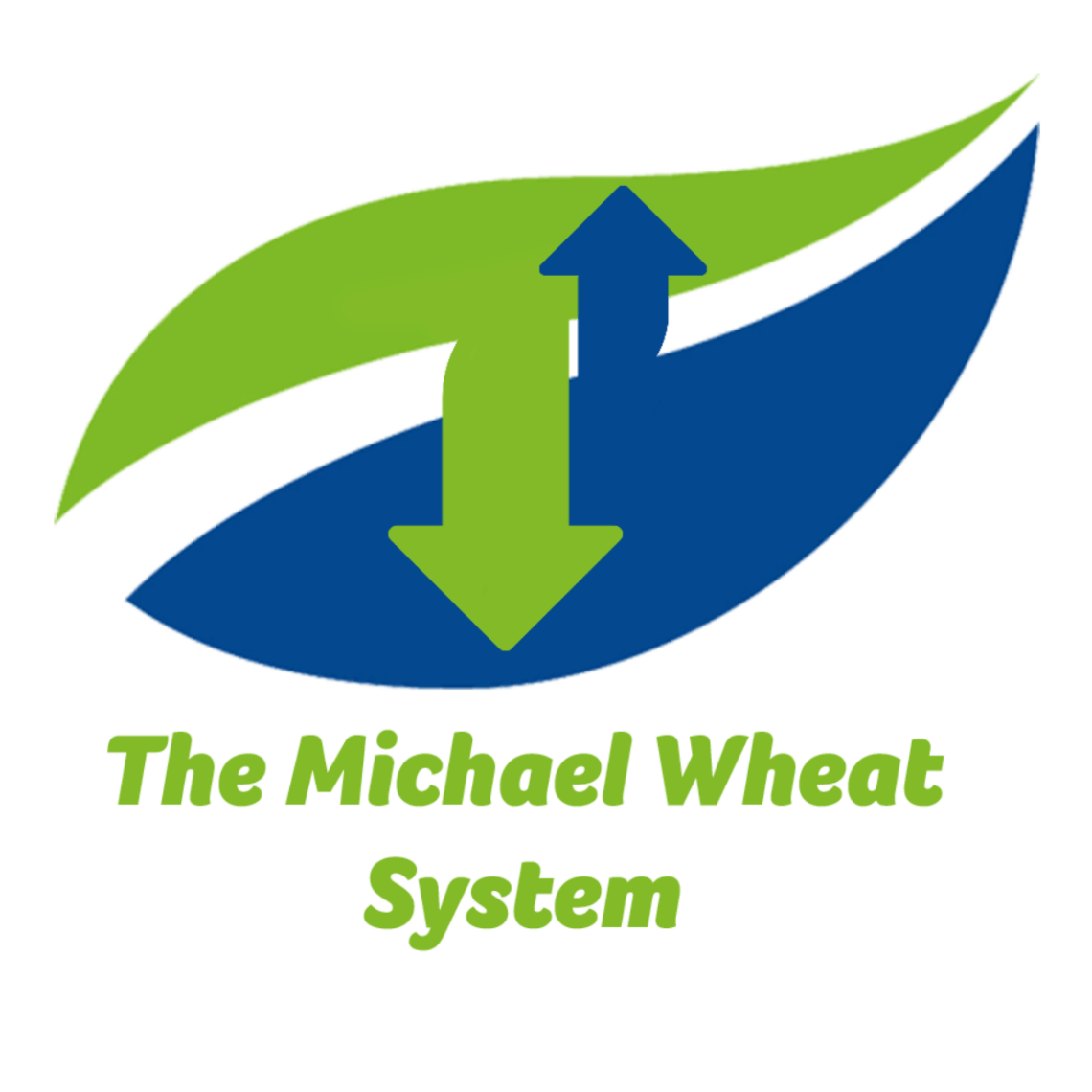
Michael Wheat System – Swimming Ponds
How do MOST of the world build non-filtered Swimming Ponds?
Swimming ponds have been around for a long time.
Mainland Europe and America have been the driving force behind the wonderful concept. The concept is to…
- Swim with nature
- No chlorine
- No chemicals
- Crystal clear water
- Natural temperatures
- Soft planting to blend into the garden.
The way they came up with building these projects was to create large gravel bed areas which served two purposes.
An area for the nitrogen cycle to work so bacteria can live and thrive so that ammonia can be digested by the bacteria into nitrite and then into nitrate.
The plants then use nitrite to food. This means the algae will be restricted from food and eventually the pond will balance and the water to clear.
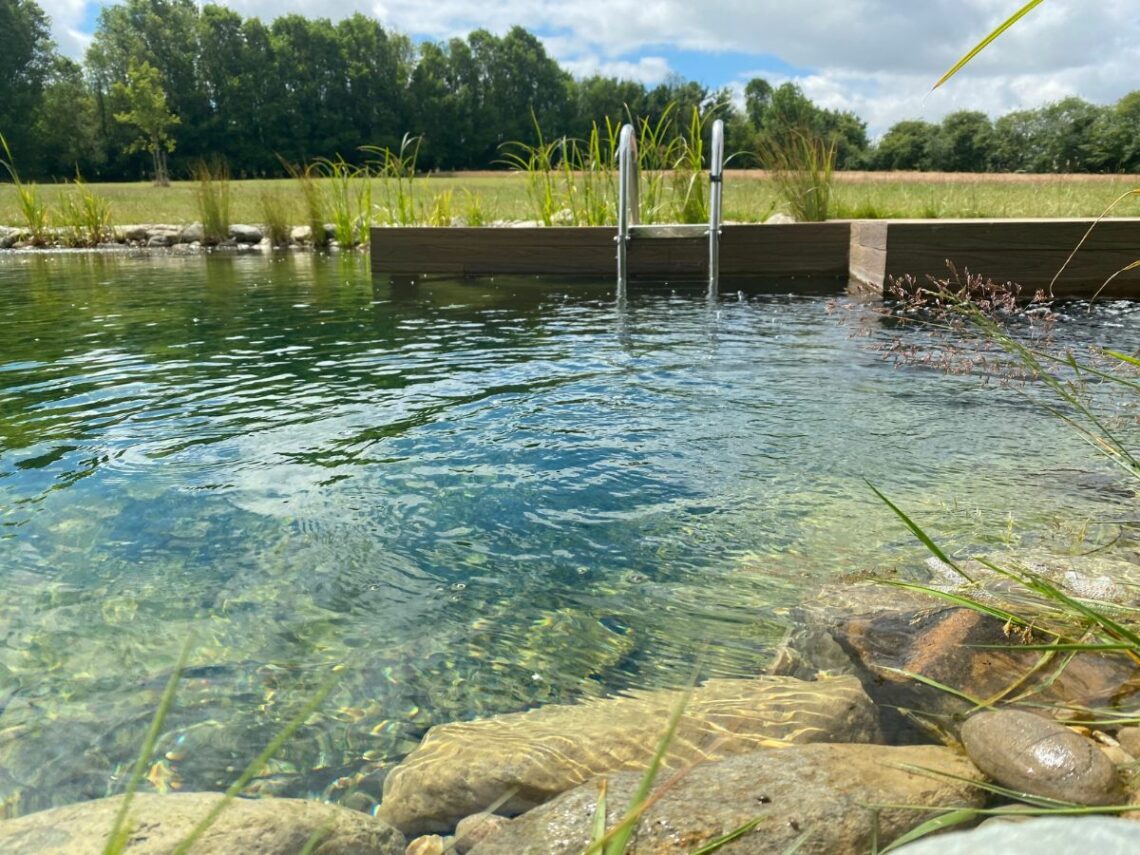
This for the last 30 years has been working fine. However, there are drawbacks to building them this way…
- Big install cost
- Gravel areas that need removing every 4/5 years as anaerobic bacteria sets in as the silt grows in these areas.
- No way of removing any bad bacteria or harmful pathogens
- Ponds can become cloudy and or green.
- Large area needed as planting zones need to be 50% of pond surface area.
- An extensive knowledge of water chemistry to tackle current tap water or even rainwater.
- Water dye sometimes used to help mask the fact it can’t handle the water chemistry.
- Changes to modern water supply and the increase in phosphates hard to tackle in this style of build.
- Sandbags sometimes are used which become unstable if the water needs to be emptied as well as looking like a world 2 bunker under water! Not very natural in my opinion.
Basically, they install a big gravel bed filter system like aquariums have.
Anyone that’s had one knows the amount that needs cleaning and emptying. The ponds bigger, and the waste management is less than an aquarium as you don’t generally have fish. But the build will and does happen. We know this as we get called out to swimming ponds that have been installed 5-10 years ago and the water testing finds traces of ammonia and nitrite. In a well filtered pond these don’t exist.
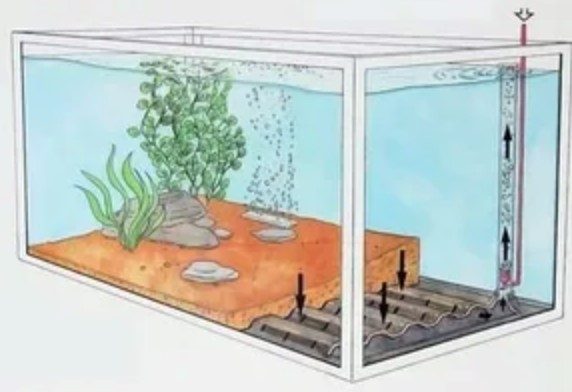
What is the Michael Wheat System for Swimming ponds?
Our broad and holistic approach is simple.
Tackle the CAUSE not the PROBLEM.
By adding in treatments to kill blanket weed only delays the issue.
By killing it, the dead blanket weed then turns into phosphates and the cycle repeats.
The UK bestselling red topped blanket weed killer only pushes the problem down the road.
Our system is an accumulation of research and development, trial and error, and a now flawless record of getting our results on 100’s of swimming ponds.
We have looked at all the systems on the marketplace and they all have distinctive flaws. We’re the UKs most prolific installer of swimming ponds building between 30-40 a year.
None of them tackle the long-term nitrogen cycle. The sceptic in me would say that’s to maintain maintenance contracts or repeat business when the project needs re doing. We simply don’t believe in that philosophy. We believe that by using modern technology with the use of the natural elements can create a project that could see 50 years.
Here’s a list of elements our system takes into account and deals with on ALL of our installs (not a complete list either).
- Water movement
- Phosphate management (unrivalled system)
- Filtration for waste management
- UV bad bacteria management
- Water chemistry adjustments
- Nutrient management of external sources
- Tap water adjustments.
- Leaf removal
- Aftercare plan
- Electrical management and planning so it’s safe to swim in
- Safe under UKs regulations on outdoor swimming
- Maintenance plan
- Oxygen levels
- Autotrophs management
- Treatment plan (non-chemical)
This system has been perfected over years of research using the world’s best companies in different sectors. NO one company has brought together a workable solution like we have.
The main reason for this is Phosphate management. In the UK phosphate levels in tap water have risen. Before 2020 we would struggle to find a reading of more than 2.0ppm. Blanket weed grows at 0.035ppm. We now commonly find the reading to be as high as 10ppm. Because of this swimming ponds need a multi attack approach to phosphates. A unique system we have designed!
UK water also commonly has low or very high gH and kH. Carbonate hardness is essential for plants in swimming ponds. It also keeps the pH stable. Only a stable well-balanced pond can tackle any potential algae.
Understanding the autotrophs cycle also means you can manage silt successfully. Organic matter will get into the pond so managing it is essential.
Too many companies have stepped into the market (and plenty that have been in it before us) without delving into the cause of problems you commonly get in swimming ponds. We have invested hundreds of thousands to perfect this system so our clients can enjoy fantastic clear, balanced, and safe to swim in water.
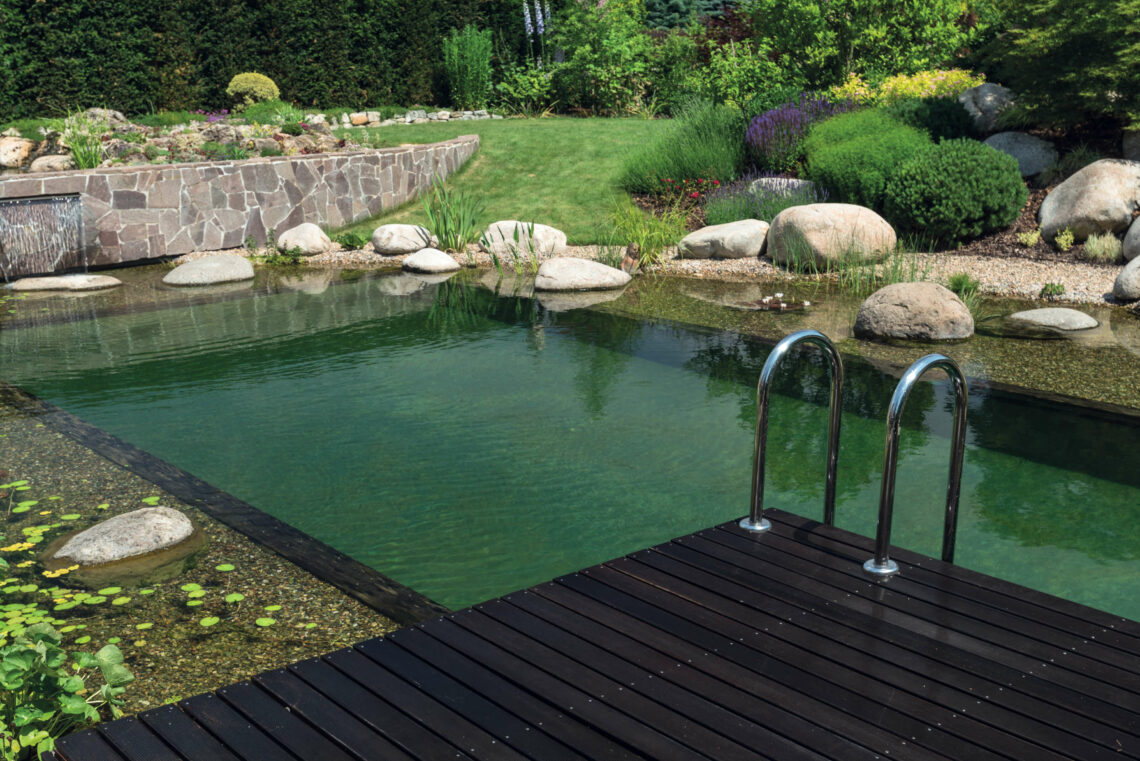
Michael Wheat System – Lakes / Fishing Lakes
How do most of the world build nonfiltered Lakes and fishing lakes?
Most lakes and fishing lakes are generally built the following way.
- Lined no covering.
- Lined covered in topsoil.
- Clay lined.
- Bentonite clay lined.
All the above have their uses. But they also all have their limitations and impact on water quality long term. Let’s look at each of them.
Lined no covering.
A plain lined lake or fishing lake creates a body of water that you can manage with products and air movement. The issues they commonly face is.
- Hydrostatic pressure pushing the liner up.
- Easy to damage.
- Limited warranty
- Have to be joined onsite.
- Normally installed in a way that levels are difficult to achieve, and external nutrients get into easy.
- Cleaning and removing of plants are difficult due to risk of damage.
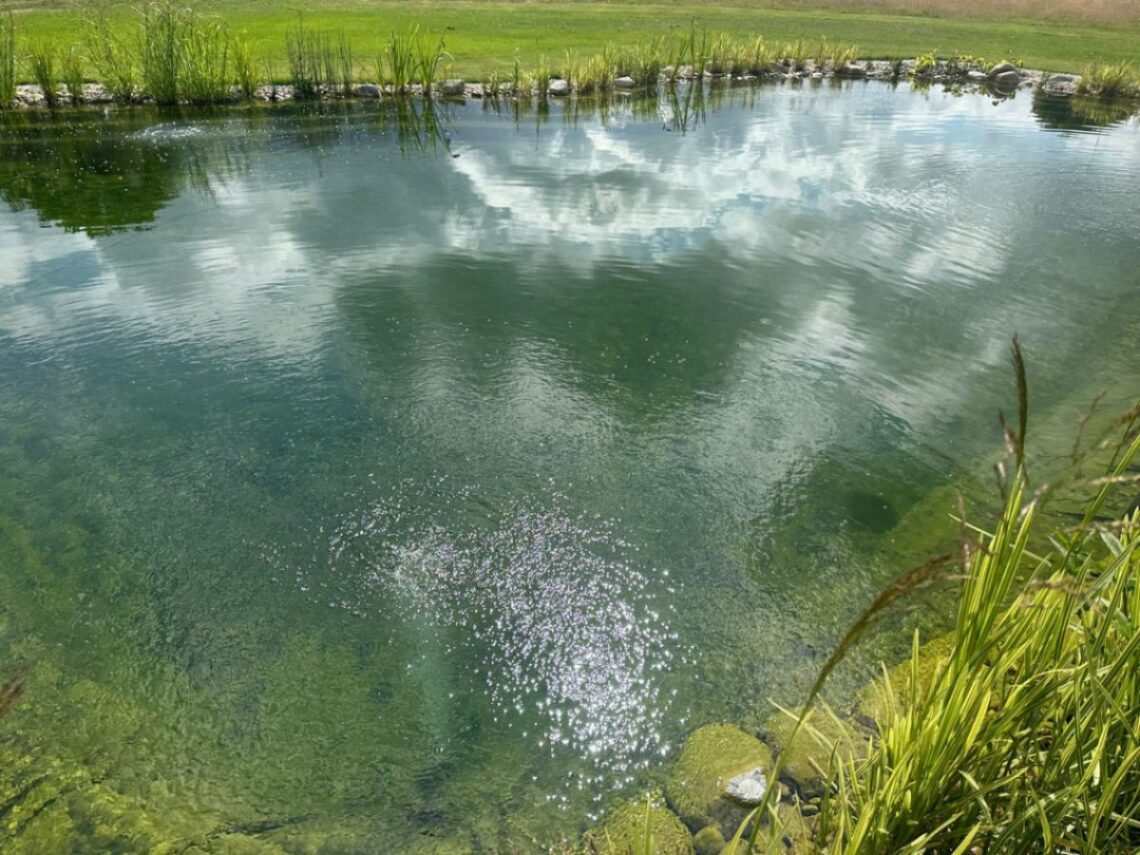
Lined covered in topsoil.
This does help negate a lot of the above but solving some of those issues creates different ones.
- Soil release phosphates slowly over time into the water making algae management near on impossible.
- Dredging and/or emptying and cleaning is near on impossible.
- Water clouds up and has a brown haze.
- Silt builds up easy and plants then start to grow in the middle.
- Eventually needs completely redoing as silt build up will remove any visible water.
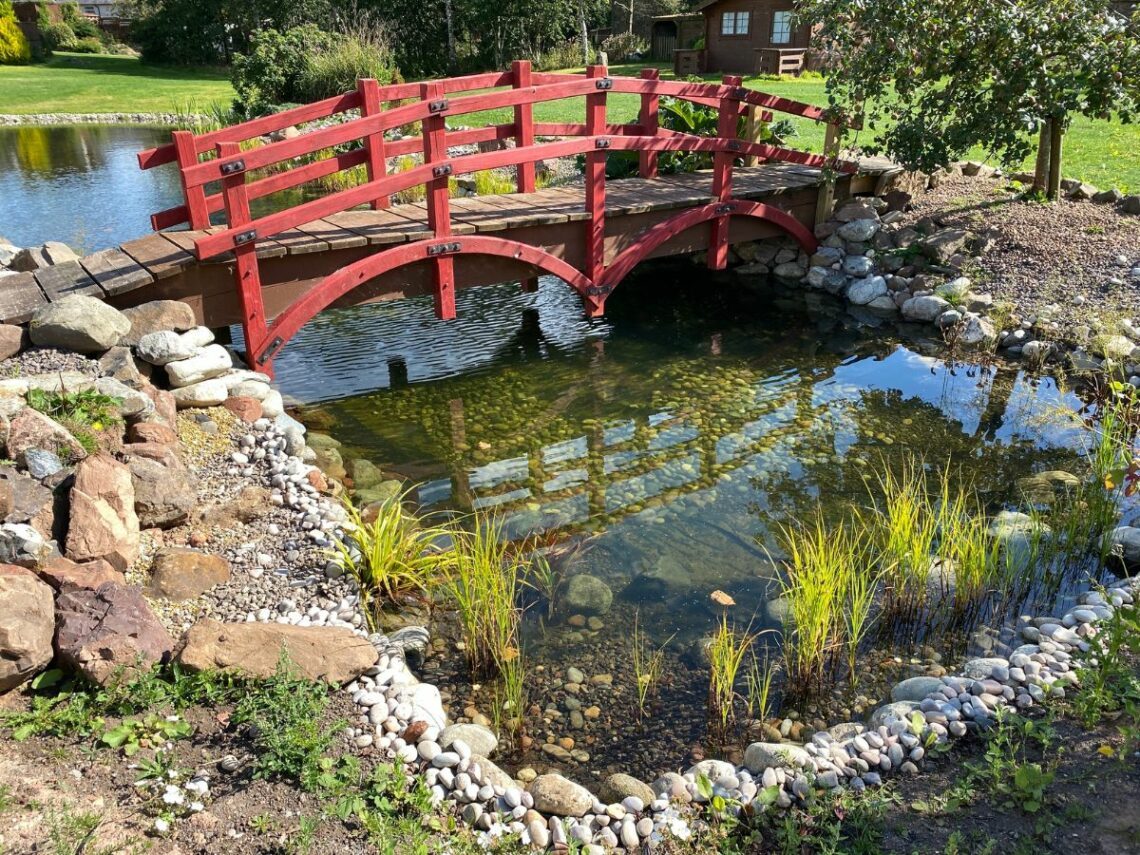
Clay lined.
Clay is commonly used and is how most natural formed bodies of water exist. Issues with this are.
- Clay is notoriously very difficult to get a complete seal on
- It’s very difficult to repair.
- Level setting also very difficult
- Dredging and/or emptying and cleaning is near on impossible.
- Water clouds up and has a grey haze.
- Silt builds up easy and plants then start to grow in the middle.
- Eventually needs completely redoing as silt build up will remove any visible water.
Bentonite clay lined.
Bentonite is useful for creating attenuation ponds. Bit as a lake or pond.
- Soil release phosphates slowly over time into the water making algae management near on impossible.
- You have to rely on ‘the self-healing’ if it does leak it’s very difficult to manage.
- Dredging and/or emptying and cleaning is near on impossible.
- Water clouds up and has a brown haze.
- Silt builds up easy and plants then start to grow in the middle.
- Eventually needs completely redoing as silt build up will remove any visible water.
So, with all that damming information about how 99% of lakes and fishing lakes are created what is the answer…
What is the Michael Wheat System for Lakes and fishing Lakes?
Our approach to lake building is holistic. We look at treating the CAUSE not the PROBLEM in our pond building. Putting together a project that will last 50+ years rather than 10 or 15.
Here’s a list of elements our system takes into account and deals with on ALL of our installs (not a complete list either).
- Water movement
- Phosphate management (unrivalled system)
- Unique oxygen system that creates waste management areas
- UV bad bacteria management
- Water chemistry adjustments
- Nutrient management of external sources
- Tap water adjustments.
- Aftercare plan
- Electrical management and planning so it’s safe to swim in
- Safe under UKs regulations on outdoor swimming
- First year management included with all installs.
- Oxygen levels
- Autotrophs management
- Treatment plan (non-chemical)
- Blanket weed management
Our company’s understanding of water chemistry is industry leading. This allows us to use our “Michael Wheat System” to create healthy vibrant ponds, which means less maintenance for the end user and more time enjoying it.
So, a little science behind our lake management which is designed around UK specific water.
All ponds need balance to be healthy. To do this we first need to understand water quality at source…
Firstly, what are the key factors in a pond which need to be monitored going forwards…
- pH – pH is the pond balance of acid and alkaline. If the pond goes acidic or alkaline it will become unhealthy, and the pond vegetation will not be able to grow successfully. pH goes up and down if the gH and kH is not buffered correctly.
- gH and kH – Carbonate hardness is the key to a healthy pond. If this is not buffered correctly plants cannot use phosphates as food.
Ideally, we get the level between 8 and 12 with 8.2 being the optimum.
- Phosphate – Generally UK tap water is around 4mg and bore hole water is around 1.5mg. Algae and blanket weed need phosphates to grow. Banket weed will grow at 0.035 level. So, this is why just installing the project is only a small part of the overall picture. You can see from the pictures of blanket weed and blue algae. This is the result of a project not being thought about holistically. To do that, you need a company that understands the water chemistry side. Blue algae in particular are dangerous and can kill wildlife and even dogs!
- Oxygen – Oxygen levels in a pond are also essential. Dissolved oxygen helps the quality of water by making it healthy. What it also does is help movement. It also helps break up anaerobic bacteria. We look for 96% – 98% oxygen levels in a lake environment. We do this by adding big air-pumps to the water.
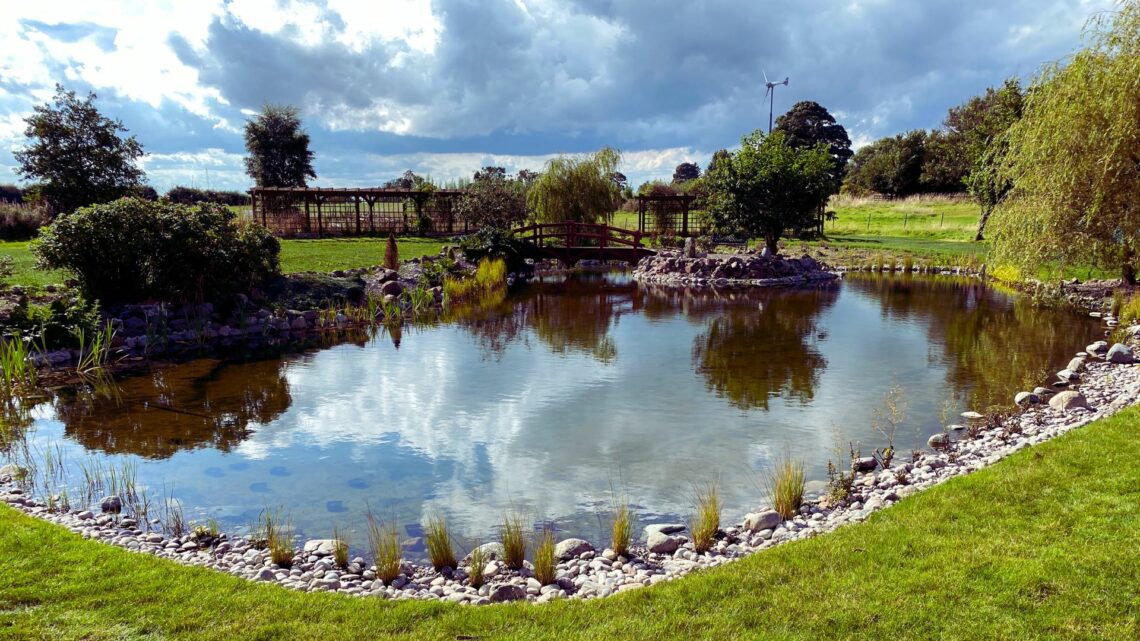
The traditional way to add oxygen to lakes is to feed it from an air pump to some kind of air diffuser.
This essentially means that it only does two things, adds dissolved oxygen and some water movement.
We feed it through a series of pipes under the gravel. This part of the Michael Wheat system means that not only do we add.
- Dissolved oxygen
- Water movement
But also
- Provide oxygen to gravel so we can create nitrogen cycle areas, essentially creating natural biological zones that act as waste management system.
- This helps to stop the forming of unhealthy bacteria like anerobic bacteria.
- It also stops silt settling in the gravel so that it can be treated and removed.
- Stops the buildup of nutrients that algae use to grow and flourish.
- Means that mass dredging will not be needed if maintained with water management additives.
- Pond treatments ONLY work in ideal conditions that oxygen and movement create.
- This also means the area can support more fish and higher growth rates without making the water toxic.
- Fishing hooks and lines cannot get caught on air lines as they are all under gravel.
- Ammonia, Nitrite – This is created by fish waste, decaying matter. Making sure the lake has areas where beneficial bacteria can live and thrive ensures that there are not additional nutrients that blanket weed can use to grow.
- Understanding how lakes work and how the cycle works essentially means that you can have a healthy pond from the start and through its cycle.
Treatment cycle
We treat for the following.
- Silt management
- Oxygen levels
- Algae growth
- gH and kH stabilising
Construction methods.
3 Key factors for lake management we have solutions for and have been considered.
- Run off that finds its way into the pond – edging that provides a nutrient edge.
- Leaves that fall into the pond – skimmer so that some of the leaves do not decay.
- Water in and the water chemistry make up of UK specific water – phosphate remover from source that removes 80%
Maintenance plan included.
12-month silver maintenance package included
With all our lake work we include a 12-month silver package which includes the following.
This includes a total of 4 visits throughout the year.
Winter Prep
- Cut back pond plants.
- Clean and service all pond equipment (pump and filter)
- Check water parameters e.g., pH, kH, gH, NO2, NO3, etc.
- Treat for phosphates
Summer Prep
- Treatment for blanket weed if needed.
- Equipment check
Helpline support Monday – Friday between 9.00am and 5.00pm on 0116 240 3735
Treatments included.
Call outs throughout the year for any equipment issues.
There is an option to upgrade this to Gold or Platinum. Our systematic approach to the build and maintenance is what gives our clients perfect projects that their investment gets most value from.
Michael Wheat System – Wildlife Ponds
How do most of the world build small wildlife ponds?
Most wildlife ponds are built with a mix of how lakes and swimming ponds are built. Generally, no filtration or management of water chemistry. This is because of the consensus that wildlife ponds shouldn’t have clear water as they’re for wildlife.
This is nonsense. Wildlife has no issue with clear water. Well planted filtered wildlife ponds are having the best of all worlds. All of our wildlife installs have crystal clear water and lots of bustling wildlife.
Nonfiltered wildlife ponds have the following long-term issues.
- No waste management so Ammonia can build up and become dangerous for wildlife.
- Anaerobic bacteria build up is dangerous for wildlife.
- Low oxygen levels can be lethal.
- No way of stopping the pond from freezing over and trapping harmful gasses
- Dirty smelling water
Build-up of algae like suspended blanket weed and duck weed.
Here are the key elements we approach when designing and installing a wildlife pond using the ‘Michael Wheat System’.
- Water movement
- Phosphate management (unrivalled system)
- Filtration for waste management
- UV to destroy suspended algae.
- Water chemistry adjustments
- Nutrient management of external sources
- Tap water adjustments.
- Leaf removal
- Aftercare plan
- Maintenance plan
- Oxygen levels
- Autotrophs management
- Treatment plan
This approach means we address the CAUSE not the PROBLEM with issues that wildlife ponds get. It also creates the healthiest environment for Wildlife.